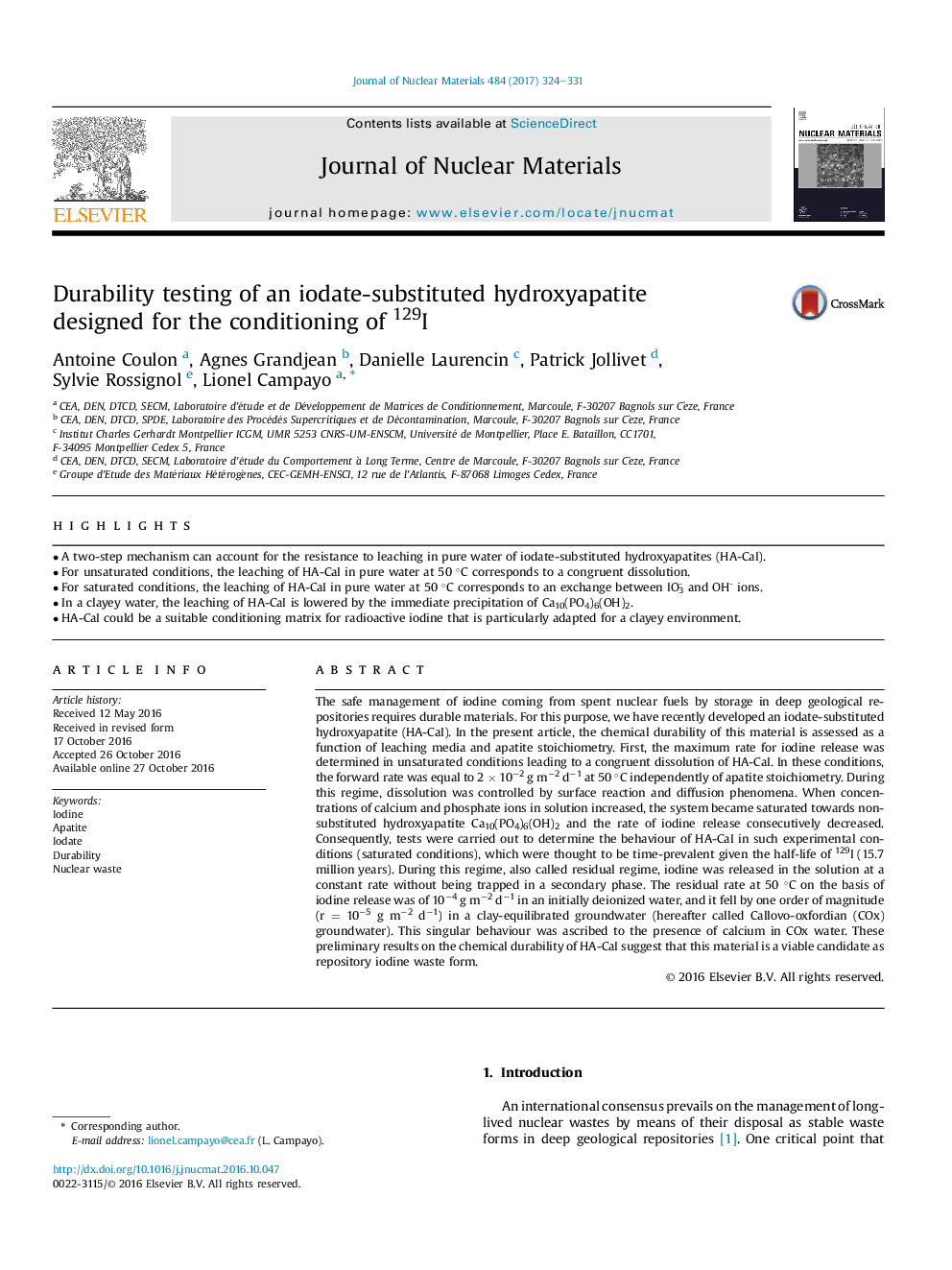| Article ID | Journal | Published Year | Pages | File Type |
|---|---|---|---|---|
| 5454435 | Journal of Nuclear Materials | 2017 | 8 Pages |
Abstract
The safe management of iodine coming from spent nuclear fuels by storage in deep geological repositories requires durable materials. For this purpose, we have recently developed an iodate-substituted hydroxyapatite (HA-CaI). In the present article, the chemical durability of this material is assessed as a function of leaching media and apatite stoichiometry. First, the maximum rate for iodine release was determined in unsaturated conditions leading to a congruent dissolution of HA-CaI. In these conditions, the forward rate was equal to 2 Ã 10â2 g mâ2 dâ1 at 50 °C independently of apatite stoichiometry. During this regime, dissolution was controlled by surface reaction and diffusion phenomena. When concentrations of calcium and phosphate ions in solution increased, the system became saturated towards non-substituted hydroxyapatite Ca10(PO4)6(OH)2 and the rate of iodine release consecutively decreased. Consequently, tests were carried out to determine the behaviour of HA-CaI in such experimental conditions (saturated conditions), which were thought to be time-prevalent given the half-life of 129I (15.7 million years). During this regime, also called residual regime, iodine was released in the solution at a constant rate without being trapped in a secondary phase. The residual rate at 50 °C on the basis of iodine release was of 10â4 g mâ2 dâ1 in an initially deionized water, and it fell by one order of magnitude (r = 10â5 g mâ2 dâ1) in a clay-equilibrated groundwater (hereafter called Callovo-oxfordian (COx) groundwater). This singular behaviour was ascribed to the presence of calcium in COx water. These preliminary results on the chemical durability of HA-CaI suggest that this material is a viable candidate as repository iodine waste form.
Related Topics
Physical Sciences and Engineering
Energy
Nuclear Energy and Engineering
Authors
Antoine Coulon, Agnes Grandjean, Danielle Laurencin, Patrick Jollivet, Sylvie Rossignol, Lionel Campayo,
